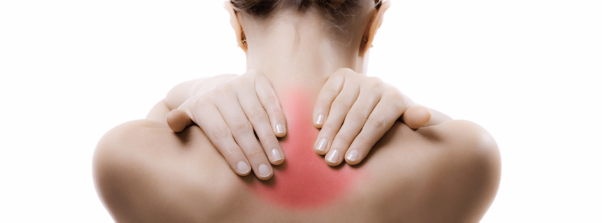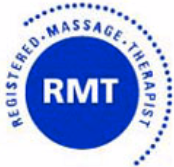Massage Therapy
Massage therapy consists primarily of hands-on manipulation of the soft tissues of the body, specifically, the muscles, connective tissue, tendons, ligaments and joints for the purpose of optimizing health.
Massage therapy treatment has a therapeutic effect on the body and optimizes health and well-being by acting on the muscular, nervous and circulatory systems. Physical function can be developed, maintained and improved; and physical dysfunction and pain and the effects of stress can be relieved or prevented through the use of Massage Therapy.
Today’s Massage Therapists use their knowledge of anatomy and physiology to combine traditional Swedish and modern Massage Therapy techniques with exercise and other therapies to treat their clients.

How can Massage Therapy Benefit you?
– Reducing or eliminating pain.
– Improving joint mobility.
– Improving circulation.
– Improving lymphatic drainage.
– Reducing muscular tension
What can you expect from your first massage?
We ask that you arrive 10 minutes early on your first visit. You will be required to fill out a confidential health history form, which will help your therapist in creating a treatment plan. The Therapist will then explain the massage process and answer and questions you may have about your condition.The first visit may include an assessment in your treatment time. For the actual massage treatment you are encouraged to undress to your level of comfort. It is much more beneficial to apply massage techniques directly to the skin and massage therapists are required to drape you with a sheet (sometimes a blanket as well) so that they only expose the portion of your body on which they are working. It is quite possible to work on a client who is partially / fully dressed, although this would limit the type of techniques the therapist can use. Your choice will always be respected and you will never be made to feel uncomfortable
What conditions can be treated?
– Anxiety and depression
– Asthma and Emphysema
– Back, leg, and neck pain
– Cancer symptoms
– Carpal tunnel syndrome (repetitive strain)
– Chronic Fatigue syndrome
– Dislocations
– Fibromyalgia
– Fractures and edema
– Gastrointestinal disorders
– Headaches
– Inflammatory conditions such as arthritis and bursitis
– Insomnia
– Kyphosis and Scoliosis
– Multiple sclerosis
– Parkinson’s disease
– Muscle tension and spasm
– Palliative care
– Post-surgical rehabilitation
– Pregnancy and labour support
– Sports injuries
– Strains and sprains
– Stress and stress related conditions
– Stroke
– Tendinitis
– Whiplash
Why choose an RMT?
 British Columbia has the highest professional standards for Registered Massage Therapists (RMTs) in North America. To become an RMT in BC, you must have at least 3,000 hours of training over three years at an accredited college. Just to compare, someone taking a four-year university degree has only 1,400 hours of in-class education.
British Columbia has the highest professional standards for Registered Massage Therapists (RMTs) in North America. To become an RMT in BC, you must have at least 3,000 hours of training over three years at an accredited college. Just to compare, someone taking a four-year university degree has only 1,400 hours of in-class education.
Registered Massage Therapists are more than hands-on professionals. They will also help you correct your posture, they will provide strengthening and stretching exercises that will help improve your condition and RMTs will instruct you on proper ergonomics at home and at the office, providing tips on desk, chair and computer adjustments. By correctly positioning your workstation or table and stretching, you can avoid painful problems such as carpal tunnel syndrome and tendinitis.
RMTs can help recognize conditions you have yet to notice. Tumours or skin cancer are just two of the disorders your massage therapist might find – and, upon their discovery, send you directly to your physician. Registered Massage Therapists have stringent education requirements to protect you.
Registered Massage Therapists are different than those who call themselves masseuses or body workers. There is even one person who has come up with the term “Masseologist”. When you’re looking for a massage therapist, find a Registered Massage Therapist — their high-level of training makes them experts in hands-on treatment, injury rehabilitation and prevention. The term “Registered” tells you that the person has three years of training and is regulated by the CMT.
People without the “Registered” designation cannot bill to the BC Medical Services Plan and do not have to follow regulations on professional standards, ethics, scope of practice and advertising. And if something goes wrong – for example, your injury or condition could actually be made worse – you would likely have no recourse against the service provider.
British Columbians can be sure that they are receiving the highest quality of care available because RMTs in BC are governed by the College of Massage Therapists of British Columbia (CMTBC) – the profession’s equivalent to the College of Physicians and Surgeons – the regulatory body for all RMTs in BC. The CMTBC ensures that the public receives safe and ethical care by establishing and enforcing standards of education, qualifications and the quality of practice for all RMTs.
Massage Therapy Coverage
Many extended health insurance plans cover massage therapy treatments when provided by a Registered Massage Therapist. They often do not require a physician’s prescription for treatments, although some may still have this requirement. Some plans require that the covered individual pay for the treatment and submit the expense for reimbursement, some plans we are able to direct bill and you are only responsible for the portion that is not covered. Please be sure to check your individual coverage.
